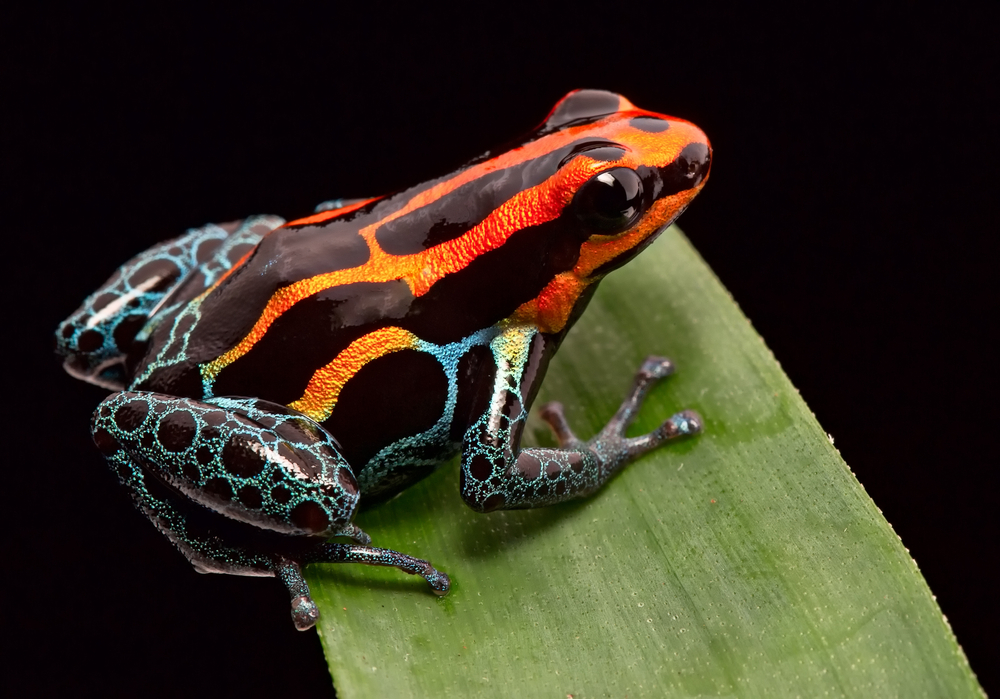The largest amphibian is the Chinese giant salamander (Andrias davidianus), which can grow up to 1.8 meters (5.9 feet) in length.
About Amphibians
There are approximately 8,000 known species of amphibians in the world. These include frogs, toads, salamanders, and caecilians. Amphibians are found in a variety of habitats, from tropical rainforests to arid deserts, and they play important ecological roles in their respective ecosystems.
Frogs, toads, salamanders, and newts are the leading amphibians. You can see and learn more about them below.
Amphibian Uniqueness
Amphibians are special and feature a variety of unique characteristics. Here is a chance to explore more about these amazing creatures and what makes them special in the animal kingdom.
- Life Stages: They typically have a two-part life cycle. They start as aquatic larvae (e.g., tadpoles) and then transform into terrestrial adults. This dual lifestyle allows them to inhabit both aquatic and terrestrial environments.
- Skin: Amphibians have permeable skin that can exchange gases and absorb water. This makes them highly susceptible to environmental changes, including pollutants, and they are often considered indicators of environmental health.
- Ectothermic: Amphibians are ectothermic, meaning their body temperature depends on the environment. They cannot regulate their temperature internally, so they are most active in specific temperature ranges.
- Breathing: While aquatic larvae respire through gills, most adult amphibians respire through their skin and lungs. They can also respire through the lining of their mouth, making them highly adaptable.
- Metamorphosis: Amphibians undergo metamorphosis during their life cycle, which is a profound physical transformation. For example, tadpoles metamorphose into frogs, undergoing changes in body shape, limb development, and dietary preferences.
- Vocalizations: Many amphibians are known for their vocalizations. Frogs, for instance, produce a variety of sounds, including croaks and calls, to communicate with each other and attract mates.
- Biodiversity: Amphibians exhibit remarkable diversity in terms of species. They are found on nearly every continent and in a wide range of ecosystems, from deserts to rainforests.
- Conservation Concerns: Amphibians are facing significant conservation challenges, including habitat loss, pollution, disease (like chytrid fungus), and climate change. Many amphibian species are endangered or have gone extinct.
Due to these unique characteristics, amphibians are a fascinating group of animals to study, and they play important ecological roles, including controlling insect populations and serving as indicators of environmental quality.
Types of Amphibians
Frogs
Diverse group of amphibians known for their jumping ability. Range from tiny poison dart frogs to large, croaking species. Vital indicators of environmental health.
Read MoreSalamanders
Remarkable amphibians with diverse forms & habits. From tiny lungless species to giant aquatic giants, they're a fascinating group within the amphibian world.
Read MoreNewts
Aquatic salamanders known for their vibrant colors, fascinating life cycles, and adaptability. They are intriguing creatures in the world of herpetology.
Read MoreToads
Robust amphibians with dry, warty skin. They're part of the frog family but are distinct with their terrestrial lifestyle and often toxic secretions for defense.
Read MoreFAQ’s
1. What is the largest amphibian?
2. What is the smallest amphibian?
The smallest amphibian is the Brazilian gold frog (Brachycephalus didactylus), with adults typically measuring around 9.8-10.3 millimeters in length.
3. What is the most dangerous amphibian?
The most dangerous amphibian is a subjective question, as amphibians are generally not considered dangerous to humans. However, some amphibians secrete toxins through their skin, such as poison dart frogs, which can be harmful or even lethal if touched or ingested.
4. What is the most poisonous amphibian?
The most poisonous amphibian is often associated with the family Dendrobatidae, commonly known as poison dart frogs. These frogs produce toxins on their skin that are highly toxic.
Indigenous people have used their toxins to poison the tips of blowdarts for hunting. However, not all poison dart frogs are equally toxic, and the level of toxicity can vary between species and even among individuals.
Sources
- Burnie, David & Wilson, Don, Animal, Smithsonian Institute, Washington DC.
- Hickman et al, Integrated Principle of Zoology, McGraw Hill, Boston.



































































